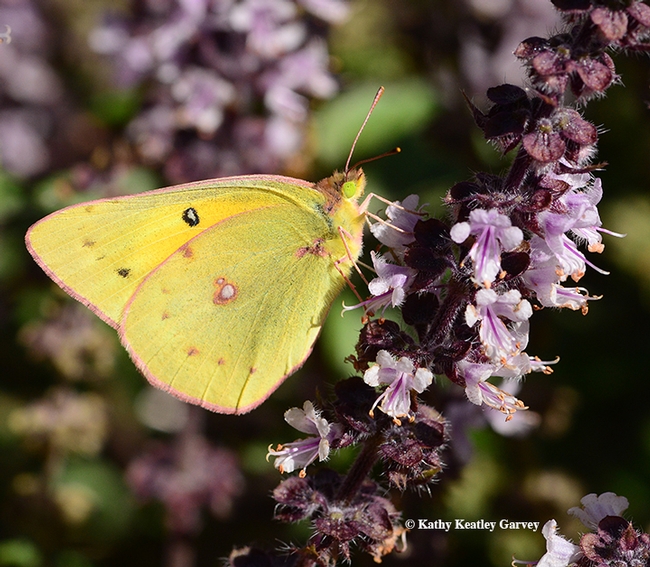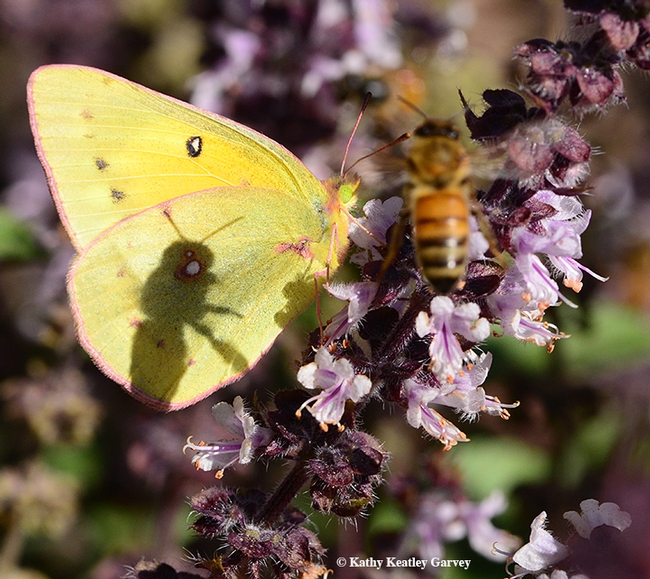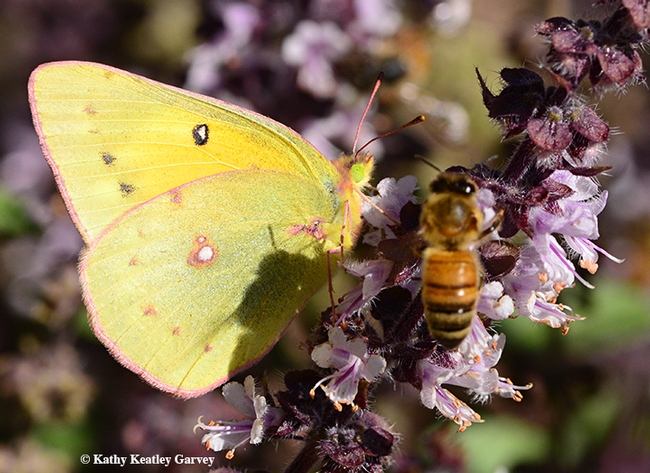It's a strikingly beautiful insect.
But in its larval stage, the alfalfa butterfly, Colias eurytheme--also known as the orange sulphur butterfly--is a pest.
If you grow alfalfa, you're not a fan of this butterfly, and rightfully so.
"Alfalfa caterpillars can consume entire leaves," according to the UC Statewide Integrated Pest Management Program (UC IPM) website. "The larger larvae are most destructive."
The butterfly lays its eggs "on the new growth of alfalfa that is less than 6 inches tall," UC IPM says. "Eggs hatch into green caterpillars in 3 to 7 days. Full-grown caterpillars are about 1.5 inches long and are distinguished from other caterpillars on alfalfa by their velvety green bodies with white lines along their sides."
"Caterpillar populations usually result from a flight of butterflies into the field when the alfalfa is less than 6 inches tall. Extremely large numbers of adults migrating between fields are often present from June to September in the Central Valley and from May to October in the southern desert."
We've been seeing lots of alfalfa butterflies sipping nectar on our African blue basil (Ocimum kilimandscharicum × basilicum 'Dark Opal').
Sometimes they don't notice you and you can edge toward them, camera in hand.
Sometimes they don't even notice that a honey bee is shadowing them. Honey bees are also quite fond of African blue basil.
Butterfly meet bee. Bee meet butterfly.
In the insect photography world, that's called a "two-fer"--a bonus of two insects in one photo.
Attached Images:

An alfalfa butterfly, Colias eurytheme, sips nectar from an African blue basil blossom. (Photo by Kathy Keatley Garvey)

A honey bee shadows an alfalfa butterfly, Colias eurytheme, on African blue basil. (Photo by Kathy Keatley Garvey)

Two can get along: the alfalfa butterfly and the honey bee. In its larval stage, this butterfly is a pest. (Photo by Kathy Keatley Garvey)